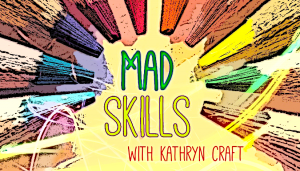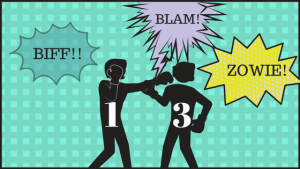Marketing
In the publication world, there’s a tremendous amount of focus on the publication date as THE time for publicity and promotion. I’ve seen authors throw up their hands the week after publication, when media interest is just starting to trickle in, and say, “I guess we struck out.”
As I’ve mentioned here before, book promotion and publicity take time. It can often take months for an article or review to appear. But even though it’s ideal to get promotion efforts started before the big on-sale day, the sky’s the limit as far as what can be done, and what can happen, even long after that day.
My friend and literary idol Anjali Mitter Duva is a glowing example. Her debut novel, Faint Promise of Rain, released in October of 2014. Since then, she has devoted herself tirelessly to promoting it via traditional media, social media, public speaking engagements (including the occasional dance performance related to the book’s plot) and much more. Last year, her efforts led to the fulfillment of a dream: a foreign rights deal with French publisher Editions Tallandier. The French edition, Adhira, fille de la pluie, released in France (where Anjali grew up) this past May – almost 4 years after the U.S. publication. Anjali’s deep commitment to long-term promotion played an important role in this wonderful turn of events.
What did she do? How did she do it? I’m thrilled to have Anjali join us today to talk about her incredible journey, and share a number of extremely handy and insightful tips: One of my favorites: “know that you’re in it for the long haul and make plans that are slow, steady and sustainable.”
Welcome, Anjali!
SB: From the very start, you had a clear vision of what you wanted for Faint Promise of Rain. Can you share that with us?
AMD: When I started to write Faint Promise of Rain, way back in a previous era, I already knew I was in it for the long haul. You see, I planned from the start to write a set of four related but free-standing books, all historical novels with dance and India at their center, yet all set at different times and contexts in history. FPR was to be the first. I think some of this long-term planning comes from my background as an urban planner working on infrastructure projects: very long projects with frequent cost overruns and schedule changes! This long-term vision is what set the tone and pace for my promotion efforts: slow, steady, sustainable. My idea was to build a loyal, strong readership and following, because I knew (at least, I hoped, and still do) that people who enjoyed my first book would likely enjoy my next three as well. But these are historical novels that take, for me at least, years to research and write. So my approach had to be one I could sustain–financially, logistically, energy-wise–over time. Years, if not decades. Five […]
Read MorePhoto by Diego PH on Unsplash
I have to confess I’ve never been a huge fan of public speaking. And yet, since Everyone Knows You Go Home came out in March, I’ve been on a whirlwind of a book tour that’s consisted of day after day of public speaking.
And I’ve loved every minute of it.
Despite being an introvert and a person who grew up very shy and soft spoken, reading my work in front of audiences has been a transformative experience. Whereas for my first book, I would get nearly unbearably nervous before an event, for my second I’ve learned to embrace the nerves as productive energy. It reminds me a lot of my teens and early twenties, a time when I was a dancer and performed onstage regularly. Always, before curtain, I’d become overwhelmed by a rush of nerves that immediately went away when the music started. There was no going back at that point, so I’d have no choice but to surrender to the moment. Those three to five minutes of dancing were always pure bliss, liberating in ways that are hard to describe.
Reading my work has begun to feel like that as well, but only because I don’t think of it as reading or public speaking. I think of it as a performance. Framed in this way, it’s something I realize I’m lucky to be able to do. Here is an audience—real, live people!—wanting to experience my work.
As a show of gratitude, I try to make that experience as enjoyable as possible. Below are some ways performing affects how I prepare for an event—and how it might help you, too.
Read MoreImage – iStockphoto: Kristina Jovanovic
Hemming in the Tension
When I tweeted up the author Anne R. Allen for writing that “Word count guidelines have been trending down in the last decade,” I found our colleague Hugh Howey checking in from a galaxy far, far away to say, “Slaughterhouse Five, Frankenstein, and Fahrenheit 451 are three of my favorite sci-fi works of all-time, and each is around 50K. The problem part of most novels is the boring middle bit. Best to just leave that part out.”
The desired price of the hardback began to determine the length of the manuscript, which is a weird way to do art. Personally, I'd read more fantasy novels if they came in smaller size but more often. Waiting 7 years for a 1,500 page tome is no bueno.
— Hugh Howey (@hughhowey) March 21, 2018
He’s right, of course, as is Anne Allen, and we went on to discuss (briefly!) the problem some big-name authors run into in this regard, too. I call it the Clancy effect. Once they’re established as a publishing house’s majors, the editorial touch gets lighter, often more pixie dust than anything else. Typos are caught, we have to hope, but developmental work (“structural” edits to your British neighbors) goes out the window.
That can go to anybody’s head, and many of us can name an icon whose work got leggier and sadly shapeless as the big career flabbed on.
I've seen this personally when I edit anthologies. The bigger the name, the more umbrage the author takes with any suggestion. I think writing can get worse over a career because of the unwillingness to be edited (and laziness from the publisher).
— Hugh Howey (@hughhowey) March 21, 2018
Too Much Entertainment
Provocations graphic by Liam Walsh
At London Book Fair last week, another element of this issue came into sharper focus as I moderated a panel for the Byte the Book organization, which looks at the industry from the digital vantage point.
While the session was titled “Publishers Go Prospecting: Finding Hidden Treasure in Your Content,” I’d worked out with our four fine panelists (from the BBC, Penguin Random House, Vodafone, and Hodder Education) an approach that would take us past the obvious issues of spelunking for good backlist titles. (Bring Up the Bodies, as Hilary Mantel might say.)
We looked at today’s mushrooming level of competition for reading time from really fine television and film. After all, you may have felt the first really deep tremor of storytelling’s new cinematic leadership in February when Amazon Publishing created its Topple Books imprint in direct collaboration with Amazon Studios and the activist-filmmaker Jill Soloway (Transparent, I Love Dick, Six Feet Under).
Tom Goodwin
As the futurist and corporate strategist Tom Goodwin told me, “Book publishing is not in the ‘text industry.’ It’s not in the ‘reading industry.’ It’s in the ‘what do people want to spend their time doing? industry.’”
And that’s where the rubber is going to increasingly meet the shortest road possible.
Read MoreA few months ago, in response to a personal conundrum I shared with you, we debated the merits of wrestling a novel that wanted to be written in first-person into third, and whether that would be wise from a marketing perspective. Positions were expounded, personal research advanced, and a few minds possibly changed or stretched. Well, my friends, if you are an indie writer, or traditionally published but able to influence your book’s marketing campaign, the first-third debate doesn’t end there.
You have yet another decision to make.
To wit, have you noticed the accelerating trend toward first-person marketing copy? i.e. taglines or back cover copy written from within the point of view of one or more characters? (Click here for a peek at the current #6 book in the Kindle US store.)
At the time I was putting out Cold and Hottie, given its frequent use by some of contemporary romance’s bestselling authors, I certainly did. But would it be the right move?
To get a handle on best practices, I did an unofficial survey of followers on my Facebook page—presumably people open to my fiction—and asked them what they thought of first-person book blurbs. Before I summarize what they said, I should make it clear that my author page skews heavily toward other writers. Their collective wisdom, therefore, might not extend to readers in general or your genre’s readers in particular. As you might have noticed, a good number of us get hung up on rules that readers don’t see as necessary.
With that said, here are the results:
Read More
Random fact: A bandwagon was literally a wagon that carried a circus band. Or so says the Internets. They were part of circus parades at first, and then politicians discovered them, as politicians are wont to do. According to todayifoundout.com, here’s what happened next:
“Politicians started to use bandwagons in parades through towns on their campaign trails. It’s believed that Dan Rice, a famous circus clown, was the first to rent out his bandwagon to a political campaign.
As a campaign became more and more successful, other people and politicians sought to rent seats on the bandwagon and ride it through town. In doing so, they received face time with the public and believed that the success of the original campaign would rub off on them.
There are records of the phrase used in political speeches throughout the 1890s, usually in the form of warning potential voters not to ‘jump on the opponent’s bandwagon in haste.’ Because of the negative connotations associated with the phrase, many didn’t admit to having a bandwagon of their own despite it becoming common.”
(Emphasis added because ‘famous circus clown’ is my new life goal.)
And hence, the phrase “jump on the bandwagon” was born. Cool!
So, why am I telling you this arcane bit of etymology? Because I want to talk about genre, and specifically, genre-bandwagoning (Is that a thing? If not, it is now!) and it’s opposite: genre-abandoning.
Imagine that you’ve been seized with an idea. One of those Ideas, ideas that won’t leave you alone. You write your story without worrying too much where it fits in the market because, hello!, that’s what we’ve told you to do and you’ve been listening. You write and polish and beta, and then there you are with your bright, amazing story that you are ready, finally!, to take out into the market. And then your agent (if you’re lucky enough to have one), or some well-meaning book-friend tells you, “No one’s buying Steampunk[1] anymore.”
Ka-chunk. (This is the sound my brain makes when I’m panicking. It’s kind of like that sound in Law & Order, only scarier).
“But, but, but,” you say. “There are Steampunk novels sitting at #1 and #2 on the NYT right now. And this is my best work ever.”
“Sure, the last gasp. Editors are buying for 18 months from now.”
“So what are they buying? What’s the next trend?”
[Insert Agent/Friend shruggie here.] “They don’t know.”
“But, but, but, I saw in the deal news that here were, like, at least two other Steampunk titles sold this week.”
[Insert Agent/Friend giving you “the face.” You know, that face that makes you feel like a moron so you don’t ask what the face means. To quote/paraphrase Watson in Sherlock. “No, I don’t know what that means. That’s why I find the face so annoying.”]
You decide not to ask any more questions. You slink out of the meeting you were excited for feeling slightly sick.
But what do you do (I mean, after the drinking)? You have to do something. Do you simply accept that Steampunk is over and stick this novel right in the drawer (along with the others)? Do you push back against the rising tide and insist that your agent take the novel out anyway? Or do you cast […]
Read MoreLast year, as a way of giving myself a meaningful deadline and my writing broader exposure, I signed a contract to participate in a multi-author boxed set. In theory, the expectations around my story were quite doable: a half year in which to write and edit a 20,000-word contemporary romance novella. I even had the nugget of an intriguing idea and began writing without delay.
For a time, progress was excellent.
Famous last words, right? Because of course, with three months left on the calendar, the challenges began.
First, with 30,000 words composed, it was obvious I was on my way to writing a full-length novel.
This wasn’t a deal-breaker, however. I knew where the story was headed (look at me, becoming a grown-up outliner and such!) and I was still in love with the idea. It felt like a fresh take on a hot trend (office romance), and it was exciting to think of writing a marketable book I also adored.
The bigger issue, and the one I needed to solve immediately, was that my characters were becoming emotionally removed. They did stuff, but they had stopped explaining the why of their actions.
The solution was one I have employed to good result in the past: write in first-person, then convert the passages to third. (This approach can provide added benefit by deepening the third-person point of view.)*
And lo, when I tried it, the heavens did part and the pages did sing. I suddenly had character motivation, emotionality, and internal consistency.
I also had the passages in first-person present tense—a problem because, try as I might, I couldn’t get them to match the preceding 30,000 words, written in third-person past.
With the deadline approaching, I could see four options:
What was an author to do, especially an author still building her audience? An author who didn’t want to sacrifice quality, and who hates missing deadlines?
Honestly, the conundrum made my head hurt. This was the first time as an indie writer that I urgently longed for an agent or publisher’s advice.
Here’s how I compensated:
Read MoreImage: Procter & Gamble, Business Wire, the 2017 Times Square holiday restrooms, a promotion for Charmin. The line too small to read in this image is: “The best seats on Broadway.”
This “media opportunity alert” arrived in my inbox:
Hi, Porter, Thought you might have interest in checking out this event spotlighting Mark Ballas and girlfriend BC Jean.
The singer-songwriter duo has teamed up with Charmin for the December celebration of restrooms in Times Square–an entire storefront of unique, unforgettable, state-of-the-art bathrooms free to the public (timely for the holiday season in NYC).
On December 19th, Jean and Ballas will perform singing and dance routines on-site.
Happy to have you there for a front row seat/interview with BC and Mark.
Please let me know if you’re interested?
I wrote back:
Hi, Nadia, I cover the international book publishing industry. Despite what many may think of books these days, our publishers do not believe we’re talking about toilet paper. Yet. Thanks, though.
With the help of AdWeek, I’ve learned that from 2006 to 2010, Charmin rented space in which to create bathrooms for seasonal shoppers in Times Square. It has revived this holiday tradition this year at 1601 Broadway between 48th and 49th Streets with 14 “themed bathrooms” open 10 a.m. to 10 p.m. for shoppers, through December 24.
The first thing we learn here is that if you work for a toilet paper company, you’d better love bathroom jokes. This is Procter & Gamble at work, squeezing the Charmin for every last available pun. All’s fair in love and advertising.
But the second thing we learn here–and the reason I’m subjecting you to this plumber’s view of American marketing–is how a publicity person/PR agent should not be operating. If you’ve got a publicist for your books or are thinking of hiring one, you need to know what this dynamic looks like from the journalist’s side of the stall door.
My provocation for you today comes in the form of three questions with which to quiz your publicity person.
Read More





















